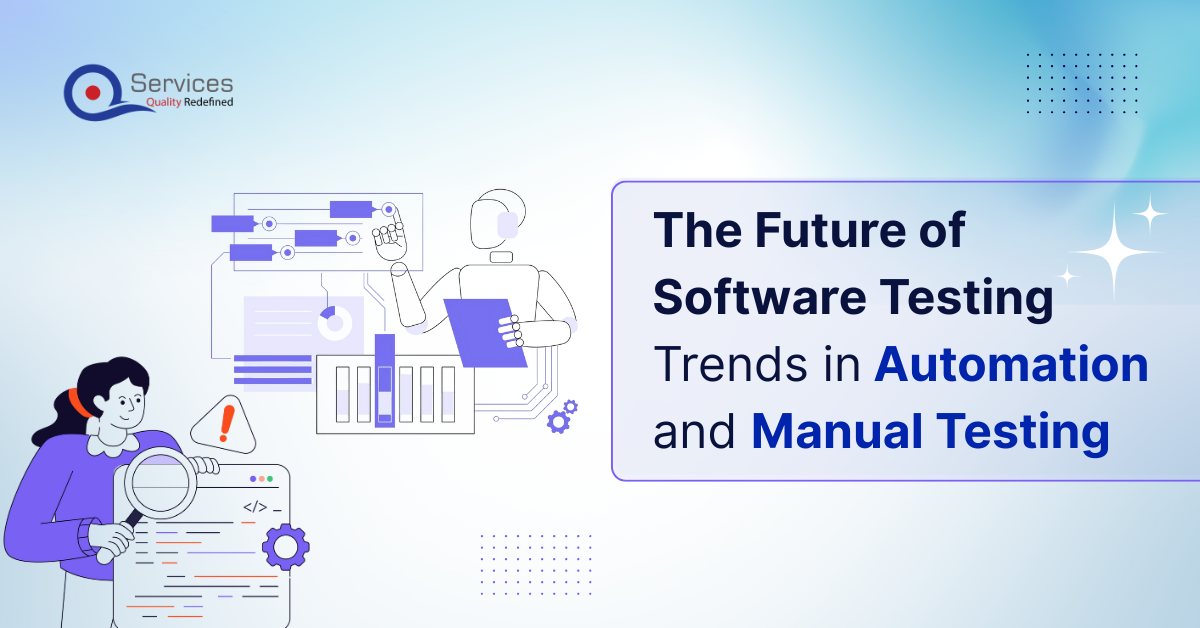Home » Manual Testing Techniques Every QA Should Know

Manual testing is the process in software development where testers execute test cases manually, without the use of automation tools. It is a practical approach that aims to ensure that a software application works as expected by simulating real user behavior.
Manual testing is important to identify bugs and issues that may be missed by automated tools, such as: User experience issues and visual inconsistencies. Testers can use their intuition, creativity, and analytical skills to explore the application in ways that automation cannot replicate.
1. Understand the requirements: Testers review the software requirements to understand what the application is supposed to do.
2. Write Test Cases: Testers write detailed instructions to verify whether the application works correctly under specific conditions.
3. Run Tests: Manually interact with the software by entering data, clicking buttons, and navigating screens as described in the test cases.
4. Record Bugs: If a problem is found, the tester documents it with detailed information so that the developer can fix it.
Manual testing plays a key role in ensuring software quality as it uncovers issues that may be missed by automated tools. Below are some important techniques that every tester should know to deliver reliable, high-performing applications:
This technique involves discovering unexpected behavior in an application. Testers explore the software without predefined test cases and use their intuition and creativity to find hidden bugs.
Best Used For: Identifying incomplete requirements or edge cases.
Testers evaluate the functionality of an application without knowing the internal code or structure. They focus only on the inputs and expected outputs.
Best used to: Validate requirements and ensure that the application works as intended.
Also known as structural testing, this technique looks at the internal logic and structure of the code. It requires knowledge of the application’s codebase.
Best used for: Checking code logic, paths, and security vulnerabilities.
These are simple tests to ensure that critical application functionality works after a build or update.
Best used: Before performing detailed testing to ensure stability.
Rerunning previously executed test cases to ensure that new code changes have not adversely affected existing functionality.
Best used: After making fixes, updates, or adding new features.
Evaluates how easy and intuitive the software is to use for the end user. This includes evaluating the layout, navigation, and overall user experience.
Best Used for: Improving customer satisfaction and user retention.
This technique focuses on testing the edges of the input area. For example, if a field accepts numbers from 1 to 100, the limits tested include 0, 1, 100, and 101.
Best Uses: Validating input fields and preventing range-related errors.
When similar application behavior is expected, divide the input data into equal partitions. A test case is created for each partition to reduce redundancy.
Best use: Reduce the number of test cases while maintaining coverage.
These informal tests are performed without a structured plan or documentation. They must rely on the tester’s experience to find critical errors.
Best used for: When time is limited or to find additional errors after formal testing.
Ensure that applications run smoothly on a variety of devices, browsers, operating systems, and network environments.
Best For: Delivering consistent performance to a diverse user base.
Manual testing is the foundation of software quality assurance, allowing testers to evaluate applications in ways that cannot be reproduced by automated tools. By mastering the following techniques, QA professionals can ensure that software meets user expectations and delivers high performance.
In Exploratory Testing, software is examined without predefined test cases. Testers use their creativity, intuition, and experience to find problems.
Why it’s important: It helps find edge cases and defects that aren’t covered in formal test plans.
This technique verifies whether the software’s features and functions meet specified requirements.
Focus Areas:
Why it’s important: Ensures that your application works as intended under normal usage.
Regression testing ensures that new updates and fixes don’t negatively impact existing functionality.
Best Practices:
Why it’s important: Maintains software stability after updates.
Usability testing evaluates an application’s user interface (UI) and overall user experience (UX).
Key checks:
Why it’s important: Increases customer satisfaction through a user-friendly experience.
This method tests the functionality of an application without looking at the internal code or structure of the application.
What it does:
Why it’s important: Simulates a user’s perspective to ensure functional accuracy.
White Box Testing analyzes the internal logic and structure of code.
Common Scenarios:
Why it’s important: Ensures code quality and optimizes performance.
BVA tests the limits of an input range. For example, if a field accepts numbers from 1 to 100, values such as 0, 1, 99, 100, etc. are tested.
Why this is important: Prevents boundary-related defects and ensures robustness.
This technique splits input data into groups (partitions) that are expected to have similar behavior.
Example: Testing form field validity, invalidity, and edge cases.
Why it’s important: Reduces redundant test cases while maintaining coverage.
Ad Hoc testing is informal and based on the tester’s intuition and understanding of the application.
When to use it:
Why it’s important: Provides an extra level of defect detection.
This ensures that your application works consistently across different platforms:
Why it’s important: Provides a seamless experience for a diverse user base.
Smoke testing checks the most important functionality of the software after a new build.
Why this is important: It ensures system stability before proceeding to extensive testing.
Although usually automated, manual performance testing can uncover usability bottlenecks by simulating real-world scenarios.
Why it’s important: Identifies performance issues under a variety of conditions.
Get free Consultation and let us know your project idea to turn into an amazing digital product.

Manual testing plays a key role in ensuring software quality by simulating real-world scenarios and uncovering issues that may be missed by automated tools. Here are some key strategies that every QA professional should use for effective software testing:
Before you begin, make sure you have a thorough understanding of the software requirements. Analyze the functional and non-functional specifications to identify critical test areas.
Why it’s important: Helps you focus testing efforts to meet user expectations and business requirements.
Categorize test cases based on their importance and impact to the software.
Best Practices:
Why it’s important: Ensures that critical functionality is tested early and thoroughly.
Follow a structured test plan to systematically cover all functionality and scenarios.
Steps involved:
Why it’s important: Reduces the chances of missing important test scenarios.
Combine creativity and experience to explore the application outside of predefined test cases.
When to use it:
Why it’s important: Helps uncover edge cases and usability issues.
Test your software on different devices, operating systems, and browsers to ensure compatibility.
Key Areas:
Why it’s important: Provide a consistent experience for all users.
After making changes or updates, retest existing functionality to ensure everything works correctly.
Best Practices:
Why it’s important: Maintains software stability over time.
Evaluate the intuitiveness, accessibility, and design consistency of your software’s UI and UX.
Key focus areas:
Why it’s important: Ensures that your software is user-friendly and accessible.
Focus on testing the edges of input ranges (maximum, minimum, out-of-range values, etc.)
Why it’s important: Prevents issues caused by input validation errors.
Keep detailed records of test cases, results, and defects found during testing.
Why this is important: Eases communication with developers and ensures repeatability.
Why this is important: Saves time by identifying serious issues early.
Work closely with developers, designers, and product owners to align testing efforts with project goals.
Why this is important: Drives a shared understanding and results in a higher quality deliverable.
Use actual or close-to-actual information for the duration of trying out to simulate real person scenarios.
Why It`s Important: Improves the accuracy and relevance of trying out results.
Bug reviews are critical equipment in software program development. They bridge the space among testers and builders, making sure that troubles are identified, understood, and resolved efficiently. Here`s why clean and concise malicious program reviews are so important:
A well-written malicious program document gives builders with the precise statistics they want to discover and fasten the problem.
Benefits:
Ambiguous or incomplete reviews can result in misunderstandings approximately the issue, ensuing in wasted attempt or wrong fixes.
Clear Reports Should Include:
Precise malicious program reviews assist builders and challenge managers compare the severity and effect of the issue.
Why It Matters:
A concise document fosters smoother conversation among QA teams, builders, and different stakeholders.
Key Details to Include:
When builders surely apprehend troubles, they could offer greater powerful fixes.
Outcome:

Avoid indistinct descriptions. Use simple, direct language to give an explanation for the issue.
Example: Instead of saying “The button doesn`t work,” say “The publish button does now no longer cause the shape submission whilst clicked.”
Ensure the malicious program may be continuously reproduced. Provide step by step commands so builders can mirror the issue.
Include:
Provide all essential statistics approximately the issue. Include:
Ensure your document is factually correct. Double-test steps and observations earlier than filing the malicious program. Avoid assumptions.
Use classes like severity (e.g., critical, major, minor) and type (e.g., UI, functionality, performance) to assist builders prioritize fixes.
Maintain a neutral, professional tone. Your goal is to improve the product, not criticize the work of others.
Pay attention to developer feedback on your bug report. This will help you identify areas that need improvement in your reporting style.
Adopting a standard bug reporting format ensures consistency. A good template will include:
Clear, actionable bug reports are invaluable to developers as they help them solve problems efficiently and improve their software. Here are some practical tips to ensure your bug report is accepted and effective:
1. Use a descriptive title : Your title should provide a concise but detailed summary of the bug.
Example: Instead of “Page Error” write “Clicking the Contact Us button on the home page results in a 404 error.”
2. Provide clear steps to reproduce the problem: You should list the exact steps needed to reproduce the problem.
Example:
3. Highlight expected vs. actual behavior: State clearly what you expected and what happened instead.
Example:
4. Provide context: Add relevant details to help developers understand the environment:
5. Attach supporting evidence: Include screenshots, screen recordings, logs, or stack traces to provide visual or technical context. Annotate images to highlight issues as needed.
6.Be objective and neutral: Avoid personal opinions and blame. Stick to objective observations and focus on the problem.
7.Categorize and Prioritize Bugs: Help developers prioritize by specifying bugs:
8. Use Standardized Templates: Adopt a consistent bug reporting format so developers can quickly grasp the details.
Sample template:
9. Test before reporting: Reproduce the bug several times to make sure it’s a recurring error and not a one-off issue.
10. Keep it concise: Avoid unnecessary details that can burden your report. Stick to the relevant facts to maintain clarity and focus.
Share your project idea with us. Together, we’ll transform your vision into an exceptional digital product!

Even with automation becoming popular, manual testing remains a big part of software quality testing. It allows testers to be flexible, creative, and look at software from a user’s point of view. Exploratory testing helps find hidden issues, and usability checks make sure the software is simple and easy to use. Manual testing and automation work well together, creating a testing process that helps deliver software that is reliable, easy to use, and ready for the market.

Software development thrives on efficiency, and automated testing seems like the golden ticket. It’s designed to save time, catch bugs early, and free up testers for more creative work. But here’s the reality: the path to effective automation is riddled with pitfalls.

Software testing is a vital part of software development. It guarantees that software functions properly, is bug-free, and provides a seamless user experience. As new technology and trends emerge, testing methods are evolving.

In today’s fast-paced software development landscape, delivering high-quality applications quickly is a non-negotiable priority. However, achieving this balance between speed and quality often feels like chasing two rabbits at once. Enter the hybrid testing strategy—a powerful approach that combines the strengths of manual and automated testing to optimize results.
Manual testing is when a tester checks software functionality by manually executing test cases without using automation tools. For example, if you’re testing a login page, you’d enter a username and password yourself to see if it works properly.
Manual testing is vital because:
Here are the key types:
Black-box testing focuses on inputs and outputs without knowing the code.
For example:
White-box testing looks at the internal structure or code of the application. It’s like checking the engine of a car to ensure all components are working as expected.
Example: Verifying a function in the code returns the correct result for given inputs.
Exploratory testing is unscripted testing where the tester explores the application to find unexpected issues.
For example, you might open random pages on a website, interact with forms, or intentionally input wrong data to see how the app behaves.
A test scenario is a high-level idea of what to test.
Example: Verify the login functionality of the application.
Regression testing ensures that recent code changes haven’t broken existing features.
Example: If a developer fixes a bug in the payment page, regression testing would check the payment page and other connected features like the cart.
UAT is where real users test the application to ensure it meets their needs. For example, before launching an e-commerce app, potential users test to confirm they can search, add items to the cart, and pay easily.
UAT is where real users test the application to ensure it meets their needs. For example, before launching an e-commerce app, potential users test to confirm they can search, add items to the cart, and pay easily.
INDIA : F-190, Phase 8B, Industrial Area, Sector 74,
Mohali, India
CANADA : 55 Village Center Place, Suite 307 Bldg 4287, Mississauga ON L4Z 1V9, Canada
USA :2598 E Sunrise Blvd, Fort Lauderdale,FL 33304,
United States

Founder and CEO

Chief Sales Officer
